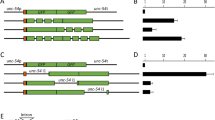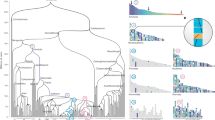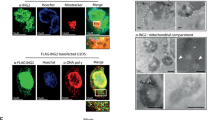Abstract
In eukaryotes, introns are located in nuclear and organelle genes from several kingdoms (ref. 1-4). Large introns (0.1 to 5 kbp) are frequent in mitochondrial genomes of plant and fungi (ref. 1,5) but scarce in Metazoa, despite these organisms are grouped with fungi among Opisthokonts. Introns are classified in two main groups (I and II) according to their RNA secondary structure involved in the intron self-splicing mechanism (ref. 5,6). Most of the group I introns carry a "Homing Endonuclease Gene" (ref. 7-9) encoding a DNA endonuclease acting in the transfer and site specific integration "homing") and allowing the intron spreading and gain after lateral transfer even between species from different kingdoms (ref. 10,11). Opposite to this "late intron" paradigm, the "early intron" theory indicates that introns, which would have been abundant in the ancestral genes, would mainly evolve by loss (ref. 12,13).Here we report the sequence of the cox1 gene of the button mushroom Agaricus bisporus, the most worldwide cultivated mushroom. This gene is both the longest mitochondrial gene (29,902 nt) and the largest Group I intron reservoir reported to date. An analysis of the group I introns available in cox1 genes shows that they are ancestral mobile genetic elements, whose frequent events of loss (according to the "late theory") and gain by lateral transfer ("early theory") must be combined to explain their wide and patchy distribution extending on several kingdoms. This allows the conciliation of the "early" and "late intron" paradigms, which are still matters of much debate (ref. 14,15). The overview of the intron distribution indicates that they evolve towards elimination. In such a landscape of eroded and lost intron sequences, the A. bisporus largest intron reservoir, by its singular dynamics of intron keeping and catching, constitutes the most fitted relic of an early split gene.
Similar content being viewed by others
Article PDF
Author information
Authors and Affiliations
Rights and permissions
About this article
Cite this article
Ferandon, C., Moukha, S., Callac, P. et al. The largest reservoir of mitochondrial introns is a relic of an ancestral split gene. Nat Prec (2010). https://doi.org/10.1038/npre.2010.4373.1
Received:
Accepted:
Published:
DOI: https://doi.org/10.1038/npre.2010.4373.1



